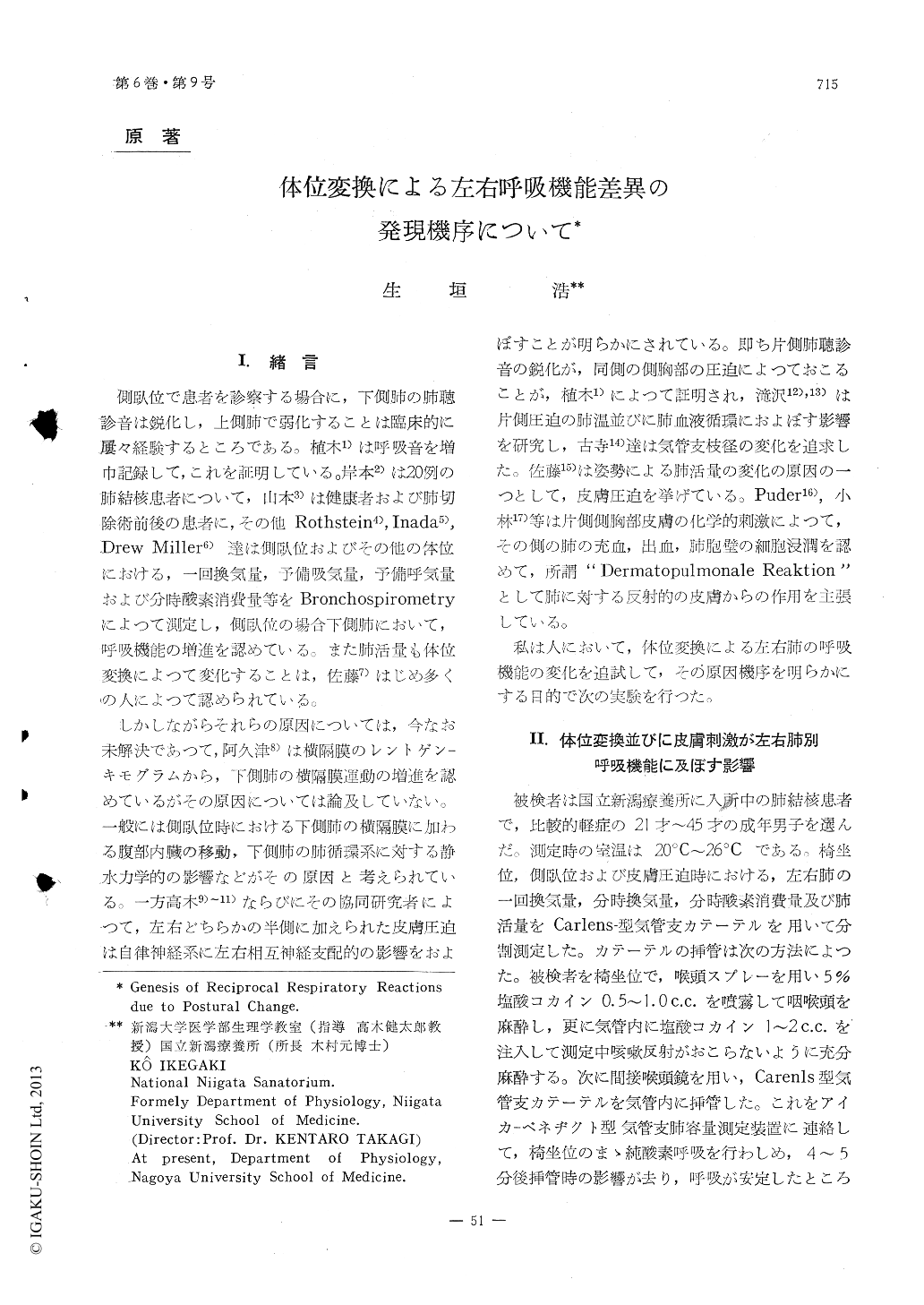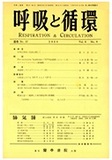Japanese
English
- 有料閲覧
- Abstract 文献概要
- 1ページ目 Look Inside
I.緒言
側臥位で患者を診察する場合に,下側肺の肺聴診音は鋭化し,上側肺で弱化することは臨床的に屡々経験するところである。植木1)は呼吸音を増巾記録して,これを証明している。岸本2)は20例の肺結核患者について,山本3)は健康者および肺切除術前後の患者に,その他Rothstein4), Inada5), Drew Miller6)達は側臥位およびその他の体位における,一回換気量,予備吸気量,予備呼気量および分時酸素消費量等をBronchospirometryによつて測定し,側臥位の場合下側肺において,呼吸機能の増進を認めている。また肺活量も体位変換によって変化することは,佐藤7)はじめ多くの人によつて認められている。
しかしながらそれらの原因については,今なお未解決であつて,阿久津8)は横隔膜のレントゲン—キモグラムから,下側肺の横隔膜運動の増進を認めているがその原因については論及していない。一般には側臥位時における下側肺の横隔膜に加わる腹部内臓の移動,下側肺の肺循環系に対する静水力学的の影響などがその原因と考えられている。一方高木9)〜11)ならびにその協同研究者によつて,左右どちらかの半側に加えられた皮膚圧迫は自律神経系に左右相互神経支配的の影響をおよぼすことが明らかにされている。
Medical practitioners have experienced that when one assumes lateral decubitus position the respiratory sound is intensified in the subjacent side and weakened in the suprajacent. Broncho-spirometric studies have showed that in the lateral decubitus position the ventilatory function rises in the subjacent side. These changes have been attributed to the shift of blood and abdominal viscera by the gravity.
The author came to the different conclusion from the following experiments. Bronchospiro-metric volumetries and gas analysis were made on the patient of minimal pulmonary tuberculosis in various postures and during the oppression of the skin. The respiratory excursion of the diaphragm was observed by means of roentgenokymography.
The results were as follows:
1) When a subject changes his position from erect to lateral decubitus, an increase takes place in the subjacent lung, in tidal volume, ventilatory minute volume, and oxygen uptake, and a decrease of oxygen equivalent. Inspiratory reserve volume increases and expiratory reserve volume decreases. Analysis of expiratory gas shows a decrease of oxygen content and an increase of carbon dioxide.
In the suprajacent lung the quite reverse changes occur.
2) When unilateral axillar region is pressed, the similar changes to those in lateral position are revealed.
3) In the lateral position, the diaphragmatic movement increases in the subjacent side and decreases in the suprajacent.
If unilateral axillar region is pressed, diaphragmatic movement of the pressed side increases and the level of the diaphragm is lowered, i. e. the diaphragmatic tone increases.
In the opposite side the reverse occurs.
From these results, it may be concluded that the difference in the respiratory function between right and left lung in lateral position are significantly attributed to a reflex provoked by the skin pressure on the lying side owing to the body weight.

Copyright © 1958, Igaku-Shoin Ltd. All rights reserved.


